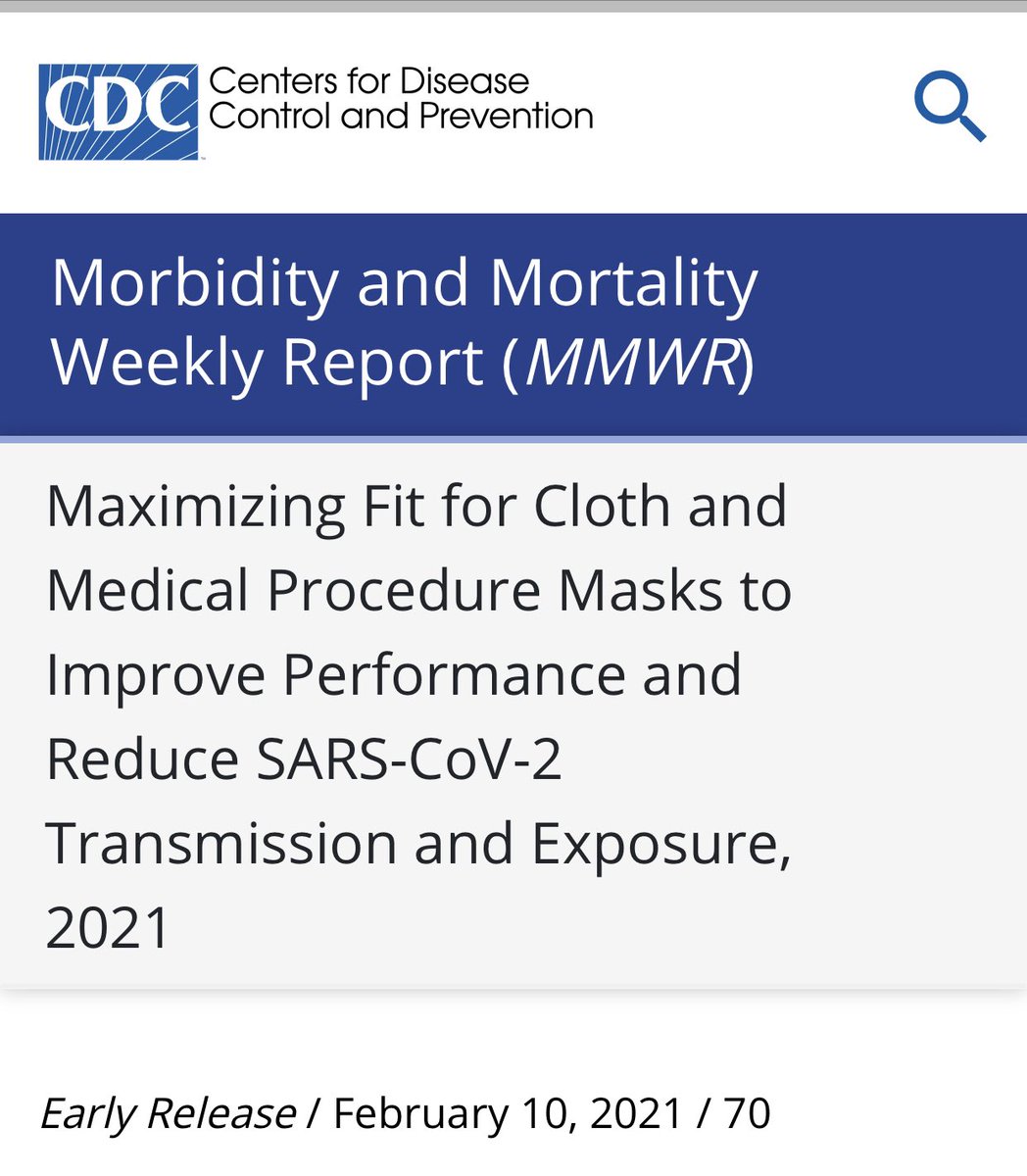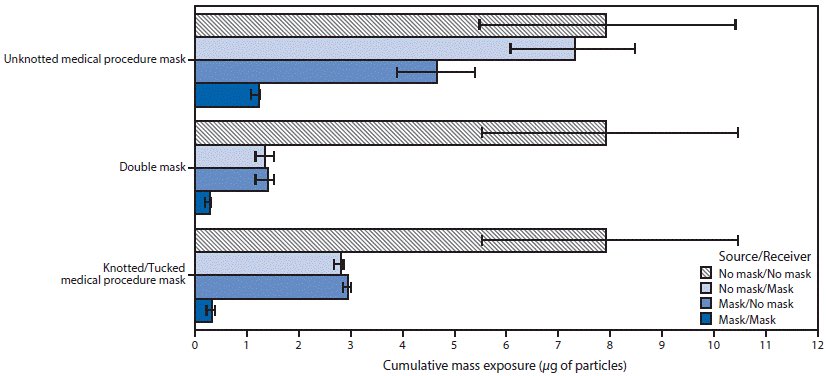1/ Here is official @CDCgov @CDCMMWR report out today
They assessed various modifications incl:
•wearing a cloth mask over a medical procedure mask (double masking)
•knotting the ear loops of a medical procedure mask & tucking in the sides
#covid19
https://www.cdc.gov/mmwr/volumes/70/wr/mm7007e1.htm
They assessed various modifications incl:
•wearing a cloth mask over a medical procedure mask (double masking)
•knotting the ear loops of a medical procedure mask & tucking in the sides
#covid19
https://www.cdc.gov/mmwr/volumes/70/wr/mm7007e1.htm
2/ Simulation set in a 10x10 foot chamber; aerosols generated simulating someone doing “light work” load and the receiving dummy doing “moderate work”
Pic below of some key mods as described:
Pic below of some key mods as described:
3/ “Ten mask combinations, using various configurations of no mask, double masks, and unknotted or knotted and tucked medical procedure masks, were assessed”
4/ “unknotted medical procedure mask alone blocked 42.0% of the particles from a simulated cough (standard deviation [SD] = 6.70), and the cloth mask alone blocked 44.3% (SD = 14.0)”
This should no longer be the standard by which the general public is masked. #BetterMasks
This should no longer be the standard by which the general public is masked. #BetterMasks
5/ “The combination of the cloth mask covering the medical procedure mask (double mask) blocked 92.5% of the cough particles (SD = 1.9).”
Significant improvement; thought to be due to improved fit provided by the cloth mask. Keep in mind this may not always be true.
Significant improvement; thought to be due to improved fit provided by the cloth mask. Keep in mind this may not always be true.
6/ “adding a cloth mask over the source headform’s medical procedure mask or knotting and tucking the medical procedure mask reduced the cumulative exposure of the unmasked receiver by 82.2% (SD = 0.16) and 62.9% (SD = 0.08)”
Source control- large range of variability
Source control- large range of variability
7/ “When the source was unmasked and the receiver was fitted with the double mask or the knotted and tucked medical procedure mask, the receiver’s cumulative exposure was reduced by 83.0% (SD = 0.15) and 64.5% (SD = 0.03), respectively”
Personal protection - also large range
Personal protection - also large range
8/ “When the source and receiver were both fitted with double masks or knotted and tucked masks, the cumulative exposure of the receiver was reduced 96.4% (SD = 0.02) and 95.9% (SD = 0.02), respectively”
When both parties efficient masking, you get very high levels of protection
When both parties efficient masking, you get very high levels of protection
9/ warning: “double masking might impede breathing or obstruct peripheral vision for some wearers, and knotting and tucking can change the shape of the mask such that it no longer covers fully both the nose and the mouth of persons with larger faces”
10/ Overall important work
Caveat:
“these experiments were conducted with one type of medical procedure mask & one type of cloth mask among the many choices that are commercially available & were intended to provide data about their relative performance in a controlled setting”
Caveat:
“these experiments were conducted with one type of medical procedure mask & one type of cloth mask among the many choices that are commercially available & were intended to provide data about their relative performance in a controlled setting”
11/ “The findings of these simulations should neither be generalized to the effectiveness of all medical procedure masks or cloths masks nor interpreted as being representative of the effectiveness of these masks when worn in real-world settings.” #covid19

 Read on Twitter
Read on Twitter




